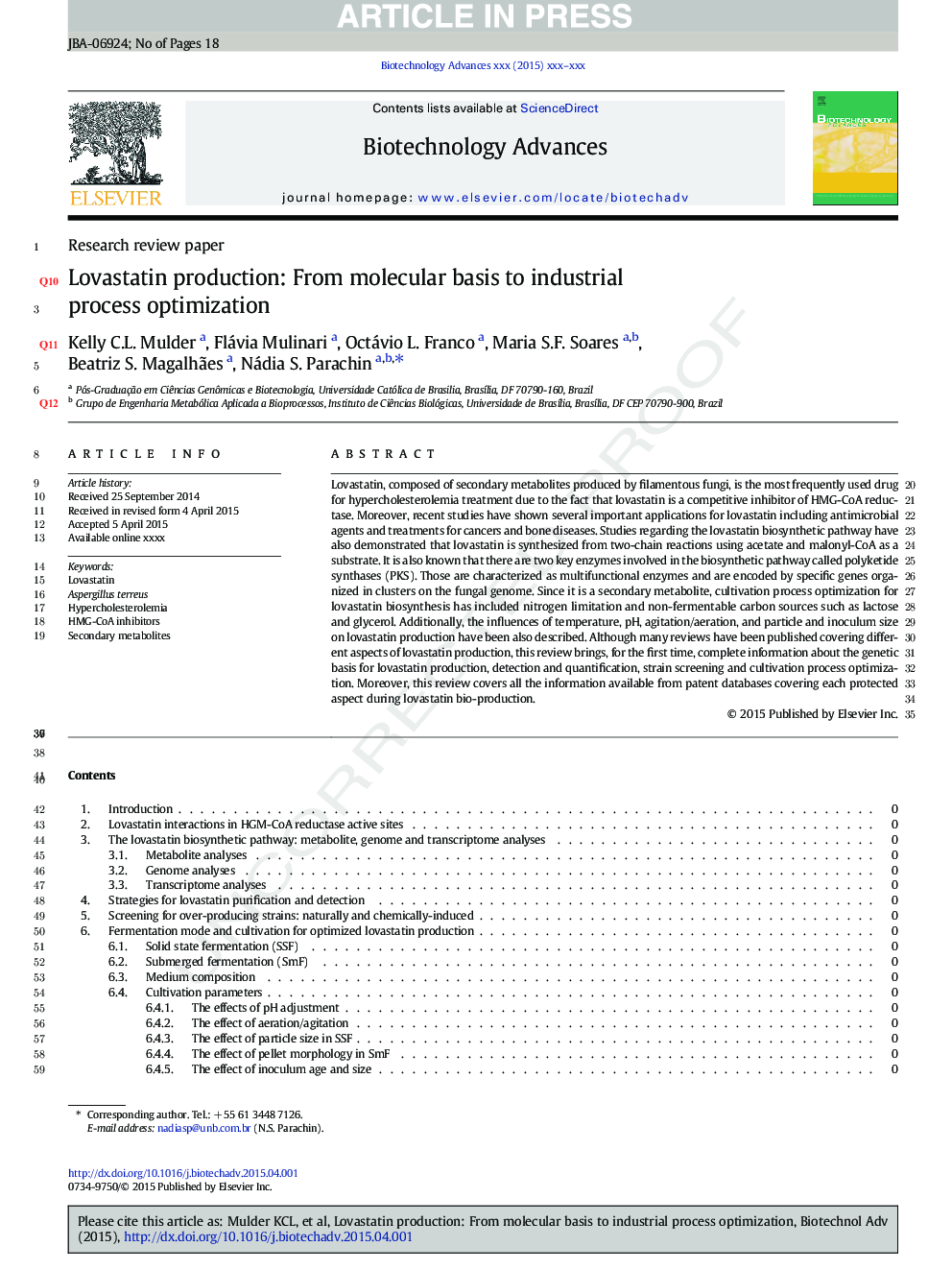| Article ID | Journal | Published Year | Pages | File Type |
|---|---|---|---|---|
| 10231454 | Biotechnology Advances | 2015 | 18 Pages |
Abstract
Lovastatin, composed of secondary metabolites produced by filamentous fungi, is the most frequently used drug for hypercholesterolemia treatment due to the fact that lovastatin is a competitive inhibitor of HMG-CoA reductase. Moreover, recent studies have shown several important applications for lovastatin including antimicrobial agents and treatments for cancers and bone diseases. Studies regarding the lovastatin biosynthetic pathway have also demonstrated that lovastatin is synthesized from two-chain reactions using acetate and malonyl-CoA as a substrate. It is also known that there are two key enzymes involved in the biosynthetic pathway called polyketide synthases (PKS). Those are characterized as multifunctional enzymes and are encoded by specific genes organized in clusters on the fungal genome. Since it is a secondary metabolite, cultivation process optimization for lovastatin biosynthesis has included nitrogen limitation and non-fermentable carbon sources such as lactose and glycerol. Additionally, the influences of temperature, pH, agitation/aeration, and particle and inoculum size on lovastatin production have been also described. Although many reviews have been published covering different aspects of lovastatin production, this review brings, for the first time, complete information about the genetic basis for lovastatin production, detection and quantification, strain screening and cultivation process optimization. Moreover, this review covers all the information available from patent databases covering each protected aspect during lovastatin bio-production.
Related Topics
Physical Sciences and Engineering
Chemical Engineering
Bioengineering
Authors
Kelly C.L. Mulder, Flávia Mulinari, Octávio L. Franco, Maria S.F. Soares, Beatriz S. Magalhães, Nádia S. Parachin,
